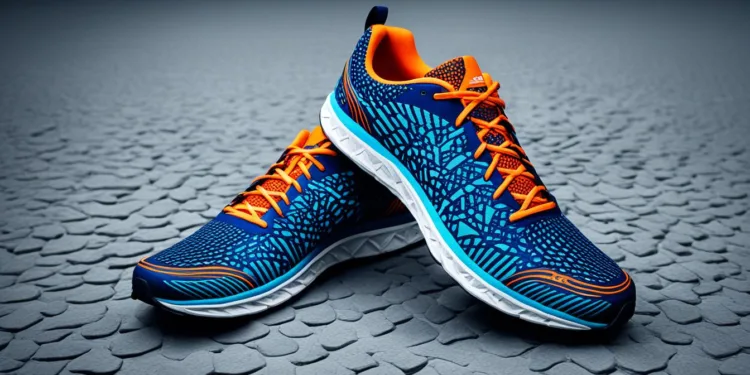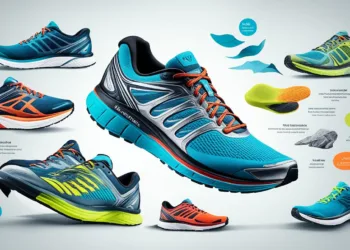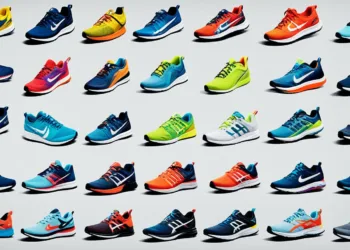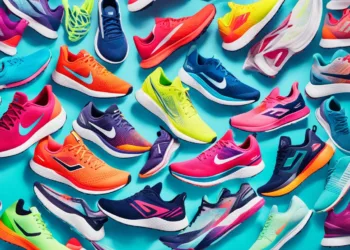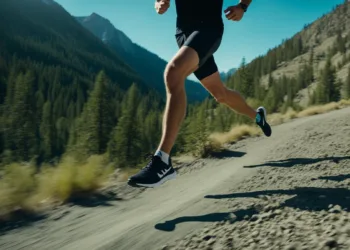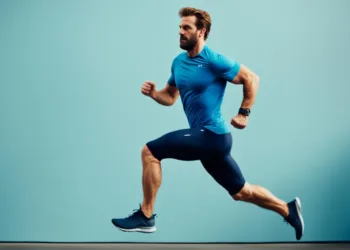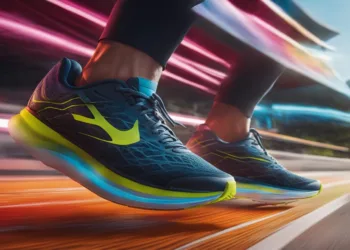Table of Contents
Running Shoes for Endurance Training: When you’re ramping up your mileage, the demands on your footwear intensify. For every stride on the pavement and push-off, your shoes must blend an exact formula of softness and firmness. They must endure countless hours of pounding without weighing you down or making the word “slog” part of your vocabulary. As you prepare for your next marathon or embrace the growing joys and challenges of endurance running, selecting the best shoes for long distances becomes non-negotiable.
Think durability, comfort, and reliability—these are the cornerstones of running shoes for endurance training. Your shoes are not just a barrier between you and the asphalt; they’re complex tools engineered to carry you farther and faster. There’s no room for compromise on quality or frequent replacements. You deserve the best, and by enhancing endurance with running shoes tailored to your journey, your goals are not just dreams but destinations within your stride.
Finding the Perfect Balance: Criteria for Endurance Training Footwear
When selecting running shoes for endurance, the key is to find footwear that can handle the stress of long runs while supporting your unique needs. The right pair of running shoes designed for long runs will directly impact your performance and comfort, especially as your training intensifies. Navigating the selection process with a comprehensive understanding of the ideal footwear for endurance runners is crucial.
Let’s examine the main aspects that determine the suitability of a running shoe for prolonged activities. These guidelines will help you make an informed choice that elevates your running experience and keeps your feet protected and your body free from unnecessary strain.
“read more Running Shoes 2024: What to Expect in Next Year’s Innovations“
Importance of Durability and Comfort
Durability should be at the forefront of your mind. Look for shoes featuring solid rubber outsoles known for their long-lasting properties and resistance to wear and tear, compared to more flexible blown rubber counterparts. Comfort, another non-negotiable factor, emerges from a well-designed shoe offering a snug fit and responsive cushioning that remains consistent even as your mileage climbs.
Minimalist vs. Cushioning Debate
The minimalist versus cushioning debate continues to influence the choices of many endurance athletes. Seasoned runners may opt for minimalist designs that promise natural foot movement. At the same time, beginners or those prone to injuries might prefer the added protection and support in shoes with ample cushioning.
“read more about Running Shoes for Yoga: Support and Grip for Your Practice“
Understanding Midsole Technologies
The midsole is the heart of your running shoe’s cushioning system. Diverse materials such as Thermoplastic Polyurethane (TPU) and Ethylene Vinyl Acetate (EVA) offer different levels of durability and comfort. TPU, for example, is celebrated for its endurance but may add additional weight to the shoe. To address this, innovative brands have crafted proprietary blends that maximize performance without the extra bulk.
At the apex of midsole innovation, Pebax-based foams, such as those found in Nike’s ZoomX or Saucony’s Pwrrun PB, deliver an exceptionally light and responsive feel. Although they come with a higher price tag, the investment could be justified by the significant strides in running efficiency they provide.
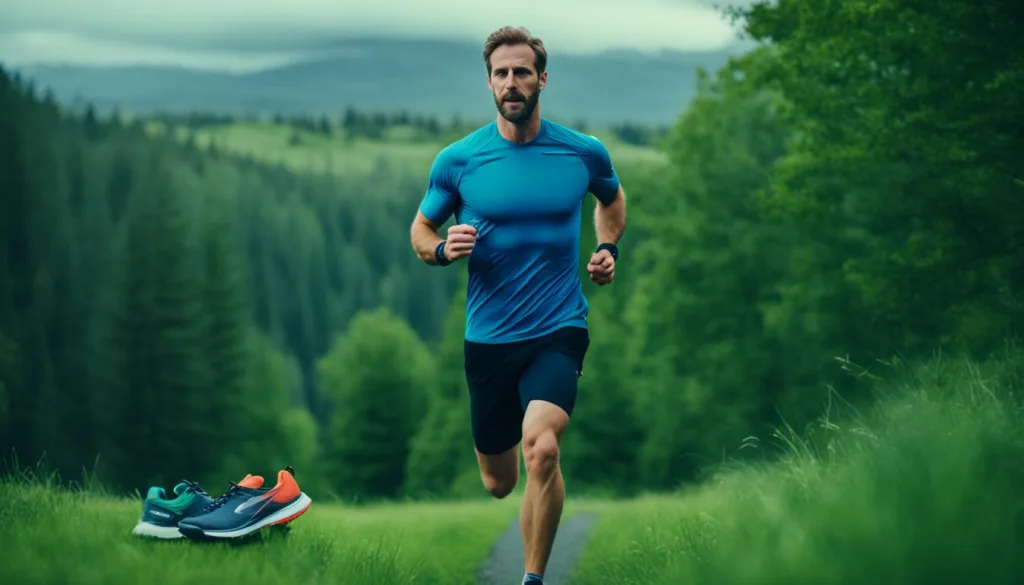
In conclusion, the perfect shoe for endurance training harmonizes durability with comfort, supports the natural mechanics of your foot, and utilizes the latest advancements in midsole technology to equip you for the long run.
Running Shoes for Endurance Training: Top Picks Reviewed
Discovering the right pair of endurance running shoes can be a transformative experience, propelling your training forward with every mile. Your high-mileage quests demand shoes that can withstand the rigours of the road while offering unprecedented support and comfort. This segment recommends endurance running shoes that have garnered positive feedback from the running community for their durability, fit, and performance.
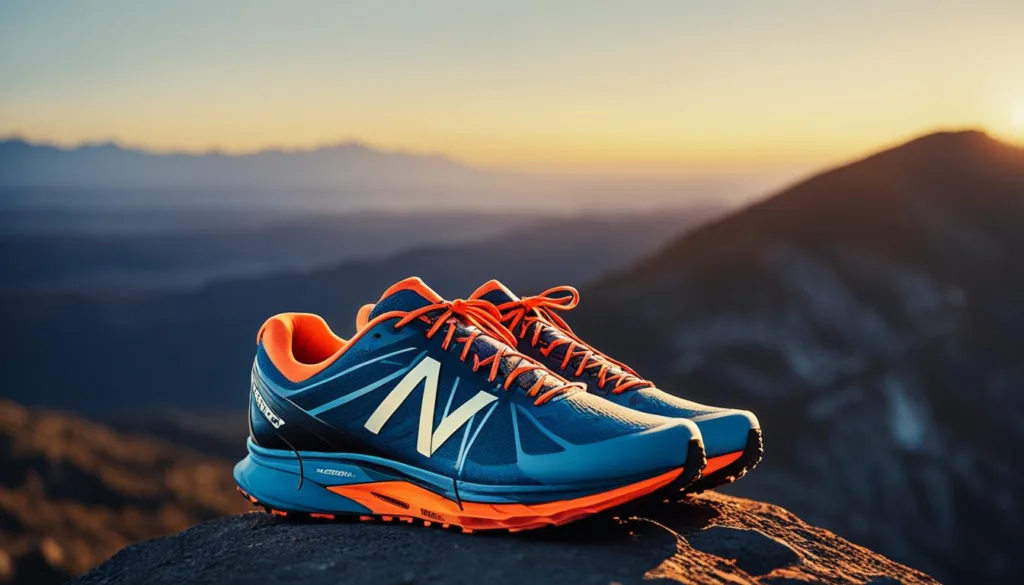
Noteworthy among versatile choices is the Asics Gel-Nimbus Lite 3, which has been highly praised for its exceptional support of the Achilles tendon, durable yet grippy outsole, and lightweight profile that defies its sturdy construction. Offering a perfect balance for those who seek an elegant shoe that doesn’t compromise on cushioning, the Gel-Nimbus Lite 3 could be your trusted companion for the long haul.
For runners who require a broader fit, the Topo Athletic Phantom 2 features a spacious, wide toebox coupled with a two-piece midsole for superior support. This thoughtful design aligns with the needs of runners who may experience foot swelling during extensive runs, thus preventing discomfort and blisters.
Weight is a critical factor in choosing endurance footwear, and the HOKA Mach 5 delivers on this front thanks to its innovative Profly+ midsole. Offering lightweight cushioning, this shoe represents a step up from its predecessors in both comfort and speed, making it a formidable choice for those seeking responsive yet protective footwear.
Marking a significant milestone, the Mizuno Wave Rider 25 combines Enerzy foam for a seamless transition and durability that honours its 25-year legacy. It stands out as a responsive and enduring option for runners who are as focused on efficiency as they are on longevity.
Lastly, the Nike Air Zoom Pegasus 39 demonstrates its versatility by delivering consistent performance on long runs and uptempo. It emerges as an all-rounder, catering to various training demands without skipping a beat.
| Shoe Model | Key Features | Best For |
|---|---|---|
| Asics Gel-Nimbus Lite 3 | Taller heel-toe drop, resilient outsole | Versatility and Achilles support |
| Topo Athletic Phantom 2 | Wide toebox, supportive two-piece midsole | Runners with wide feet |
| HOKA Mach 5 | Profly+ midsole, lightweight cushioning | Lightweight cushioning and responsiveness |
| Mizuno Wave Rider 25 | Energy foam, durable outsole | Smooth transitions and durability |
| Nike Air Zoom Pegasus 39 | Looped eyelets, gusseted tongue, versatile cushioning | Long runs and varied paces |
Whether you’re an experienced marathoner or newly dedicated to upping your mileage, aligning your footwear with your ambitions is vital. Through an array of well-founded recommendations for endurance running shoes, you are poised to select a pair that resonates with your training ethos and carries you confidently across endless miles.
“read more about Running Shoes with Temperature Control: Comfort in Every Climate“
How the Right Running Shoes Can Enhance Your Endurance
Unlocking the full potential of your endurance begins with the proper footwear. As you delve deeper into the realms of long-distance running, the impact of a tailored pair of shoes on your performance becomes ever more apparent. An optimal blend of responsiveness and cushioning, coupled with the correct heel-to-toe drop, can elevate your running experience, underscoring the age-old adage that, sometimes, the shoes make the runner.
Impact of Shoes on Long-Distance Running Form
Every runner’s form is unique, yet universally, a pair designed for endurance can correct inefficiencies and enhance natural gait mechanics. You might notice significant reductions in injury risk and overall strain as your feet can handle the repetitive impact of extensive runs. Thus, understanding how running shoes can improve endurance starts with their influence on your form, working harmoniously with your movements to ensure a smoother and more efficient run.
Balancing Responsiveness with Cushioning
Striking the perfect balance between a lively response and absorbing cushioning makes all the difference during endurance training. Midsoles utilizing state-of-the-art materials such as Nike’s ZoomX or Saucony’s Pwrrun PB ensure every landing is met with a cushioned embrace yet pushes you forward with ease. The responsiveness of these materials enables you to maintain a spirited pace—providing that much-needed vitality as the miles stretch on.
The Role of Heel-to-Toe Drop on Performance
The heel-to-toe drop of your running shoes can profoundly affect your endurance game. This measurement dictates the angle at which your foot strikes the ground and influences the load distribution across various muscle groups. A lower drop encourages a more natural midfoot strike, while a higher drop can benefit those accustomed to or needing additional heel support. It’s about identifying what works best for you to forge ahead with comfort and efficiency, considering the unique demands of long-distance runs.
In essence, the journey to improve your endurance through the right running shoes becomes a path of personal discovery. By selecting running shoes that resonate with your running style and physiological needs, you can enhance not only your endurance but also the sheer joy that comes with every run.
“read more about Running Shoes with Heel Counter: Enhanced Stability and Support“
Selecting Endurance Running Shoes: Personalization is Key
Embarking on long-distance runs requires determination and the right gear, particularly running shoes. Selecting running shoes for endurance hinges on personalizing the fit to your biomechanical needs, ensuring that your boots act as extensions of your feet rather than hindrances. Here’s how you can make sure you lace up the right pair.
Assessing Your Foot Type and Gait
Understanding your foot type and gait is vital in selecting shoes that support you throughout countless miles. Flat-footed runners tend to overpronate, meaning their feet roll inward upon landing. This motion can lead to injuries, making stability features in shoes an essential component for this group. Conversely, those with high arches usually require shoes with generous cushioning to compensate for less natural shock absorption.
A spacious toe box is also critical as it accommodates foot swelling—a common occurrence during extended runs. Similarly, breathable materials can prevent overheating, reducing the risk of discomfort and blisters. Durability is paramount for the roughness of off-trail conditions, so consider shoes with rock plates and durable outsoles. These materials can withstand the unforgiving terrain, averting premature wear.
“read more about Running Shoes for Plyometric Training: Jump Higher, Land Safer“
When is it Time for a New Pair?
While a high-quality running shoe is a durable ally, even the best have a finite lifespan. It is crucial to recognise the signs indicating it’s time to retire your current pair. Monitor the condition of your shoes, paying attention to the outsole wear, cushioning breakdown, and any discomfort during runs that used to feel OK. Replace your training shoes before they compromise your form or fail to provide the needed support, ensuring you’re well-fitted for the main event—race day.
- Check for signs of wear in the outsole and cushioning.
- Be aware of any new pains or discomfort during runs.
- Track the mileage on your shoes—most have a range of 300-500 miles.
- Consider a new pair for your race to ensure optimal performance.
By staying vigilant with the condition of your shoes and aligning them with the specific needs of your feet, you can make an informed decision when it’s time to evolve your gear. After all, in the pursuit of endurance, every step should bring you closer to your goals—not discomfort.
Extending the Lifespan of Your Running Shoes
Your commitment to endurance training demands more than just regular runs; it requires a dedication to preserving the tools that carry you mile after mile. With the proper care and approach, you can extend the life of your running shoes for endurance training, ensuring that they continue to offer the support and performance you need to go the distance. Here, we’ll share tips on maintaining your best shoes for long-distance running and how rotating different pairs can benefit your shoes and overall running experience.
Maintenance Tips for Endurance Runners
Longevity in running shoes starts with maintenance. Regularly cleaning your shoes by hand can prevent the breakdown of essential materials, while avoiding the rough cycle of a washing machine helps maintain their structure. Allowing shoes to air dry naturally keeps the integrity of the foam and other components intact while preventing unpleasant odours. Additionally, inspecting your shoes for early signs of wear can pre-empt potential injuries, making maintenance a critical component of your endurance training regimen.
Rotating Between Different Pairs
Rotating between multiple pairs of shoes, each with various levels of cushioning and support, is not just about giving your leading pair a break—it’s about preparing for every training scenario. By having a rotation, you allow each to fully recover from moisture and the stresses of your workouts, which is integral for runners racking up high mileage weeks. Furthermore, having specialized footwear for different sessions—speedwork, recovery runs, or long weekend jaunts—ensures that you have the appropriate support, optimizing your training whilst safeguarding your feet. Thus, a strategic shoe rotation becomes an investment in the longevity of your gear and a safeguard for your most vital running asset—your feet.


